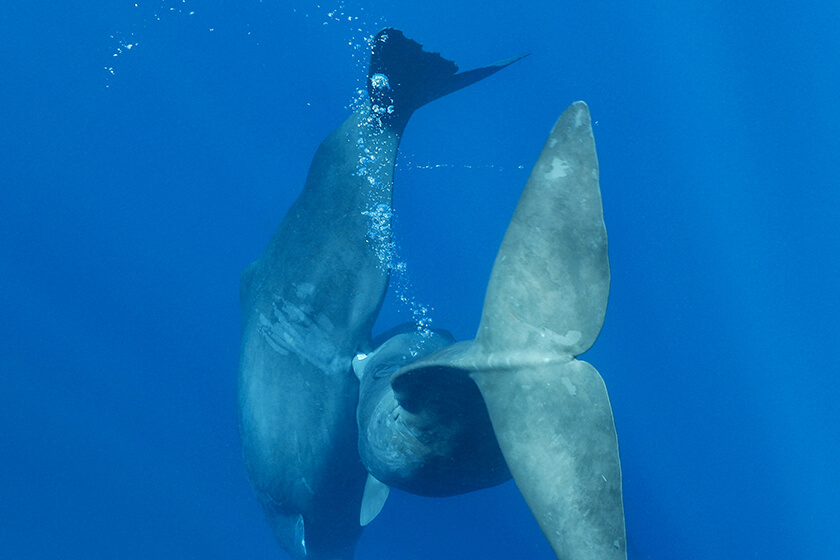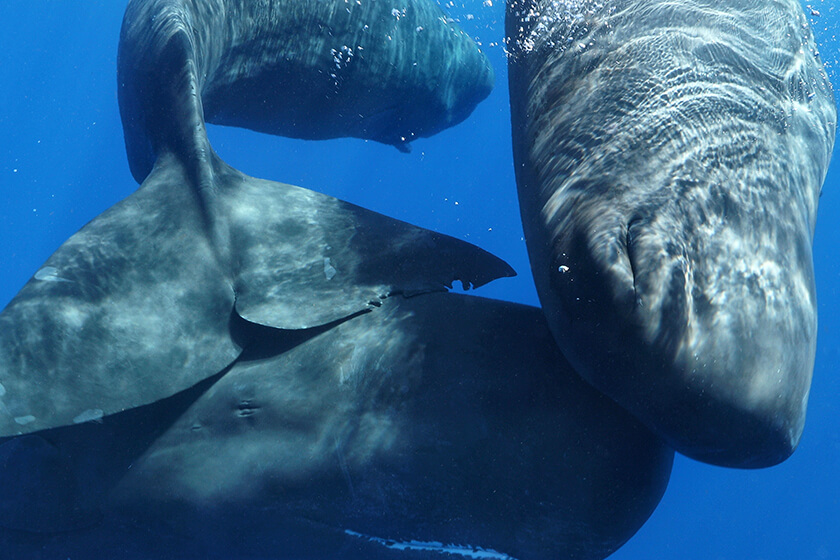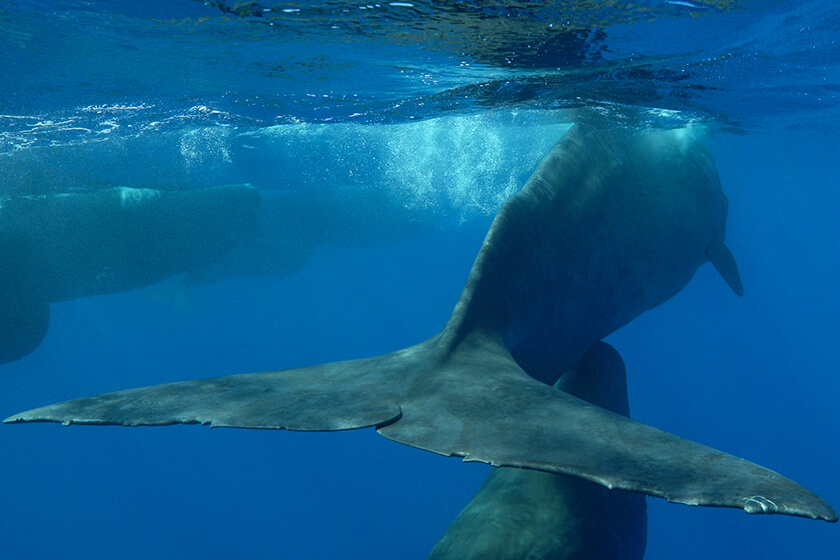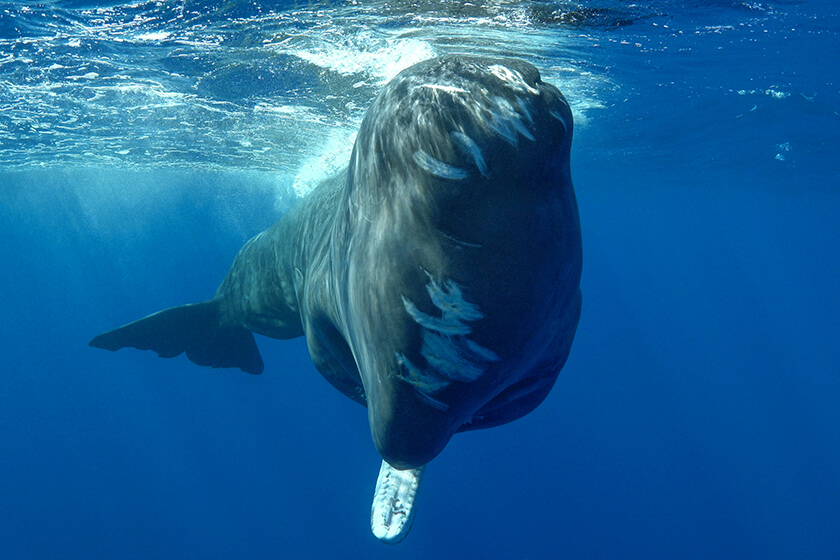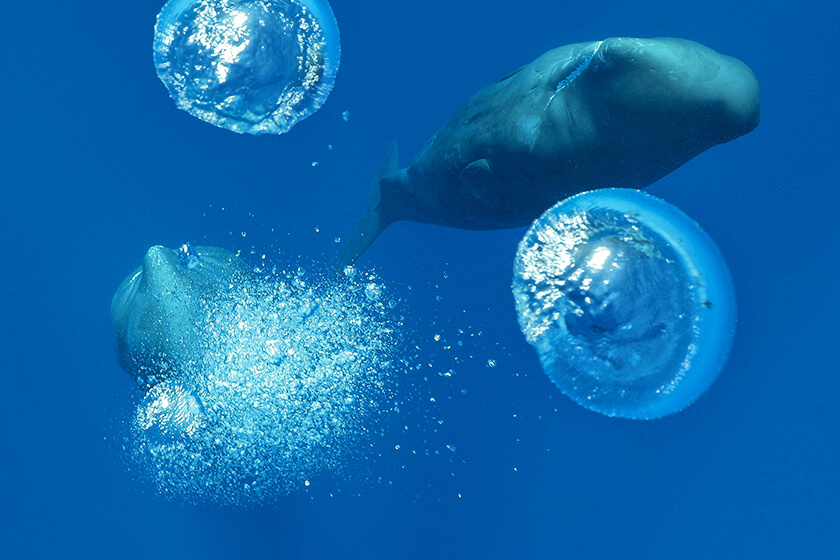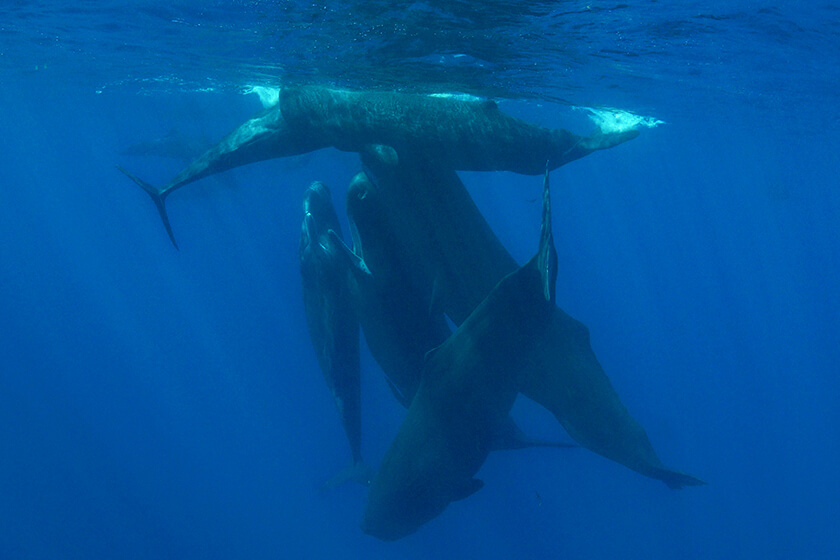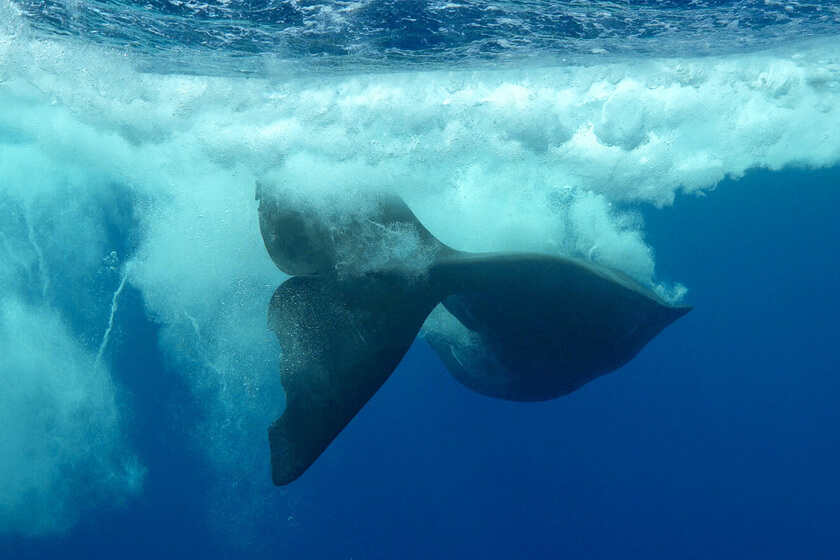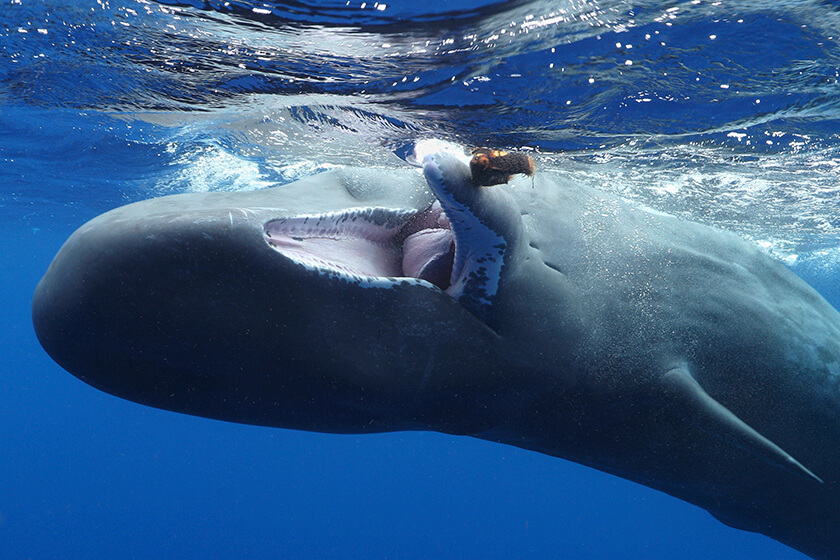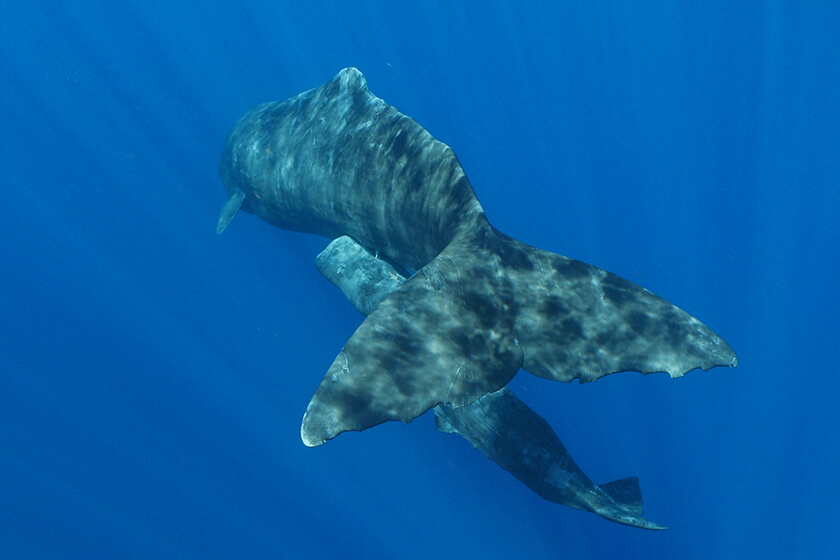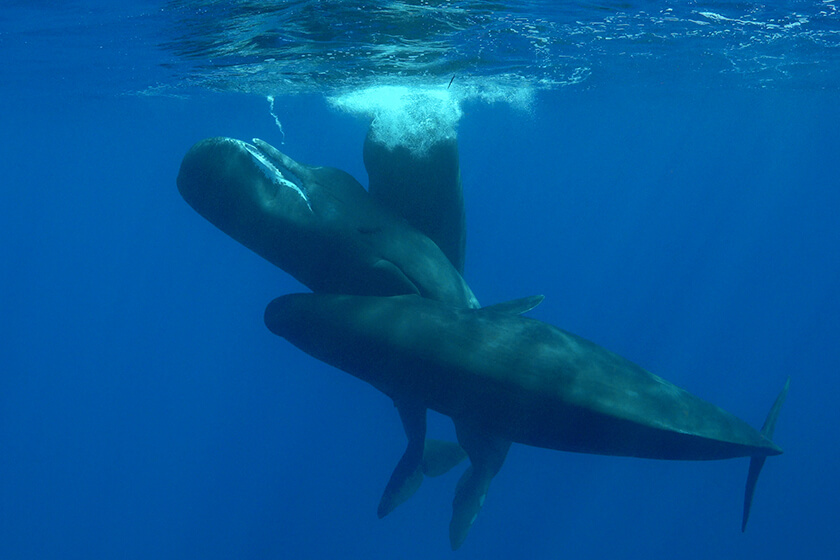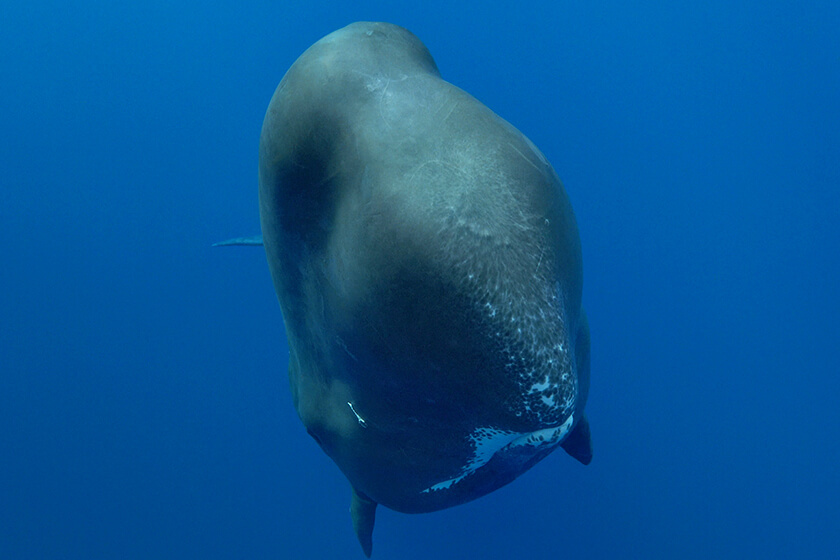Behaviors: Communicating
The sophisticated language of sperm whales is a key component of their culture. The whales communicate by emitting precise combinations of clicking noises that are woven into a rich vocabulary that forms a complex and culturally specific system of communication. Their verbal language is passed from generation to generation along with information regarding the foraging, traveling, and socialization practices unique to each clan.
In this section we present a review of sperm whale social structure and highlight the cultural significance of their fascinating language. We provide a description of the anatomical mechanisms that enable vocalization and define the basic characteristics of their verbal repertoire including the acoustic markers specific to the whales of the Eastern Caribbean.
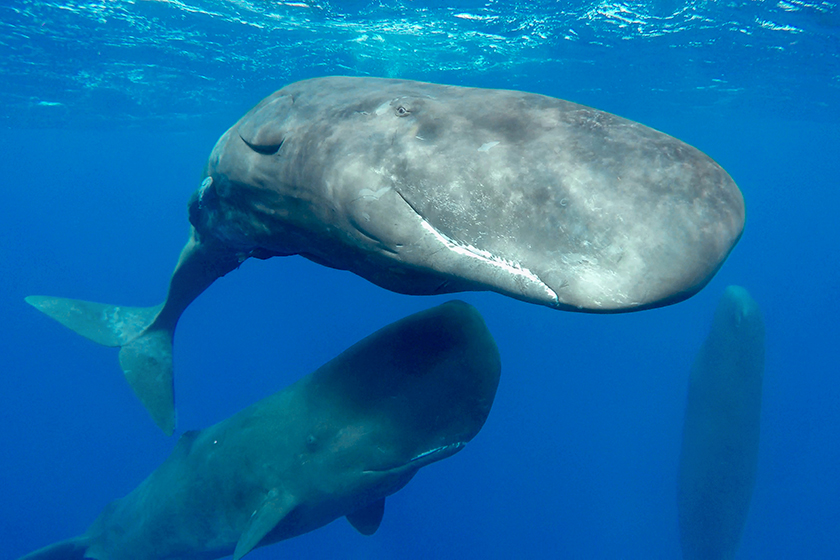
Social Structure and Cultural Identification
Matrilineal based social units form the foundation of sperm whale culture. The females of this tightly knit social structure remain together for life, while the males leave the family groups as young juveniles. Unit members perform all of their daily functions as a group and share responsibilities for the care of their dependent young. The elder members perpetuate the transference of specified behavior and language through multiple generations.
Each social unit is defined by its own distinct repertoire of vocalizations, and every individual within the family produces a personal acoustic signature. These language markers enable the whales to define themselves through their group identity and as individuals within the unit. Members of the unit are also able to determine whether whales from other groups are amenable to socializing.
Social units who reside in the same vicinity and share the same learned behaviors and vocal repertoire comprise a broader social group called a vocal or acoustic clan. The acoustic clans are distinguished by variations in their dialects and can include several thousand whales.
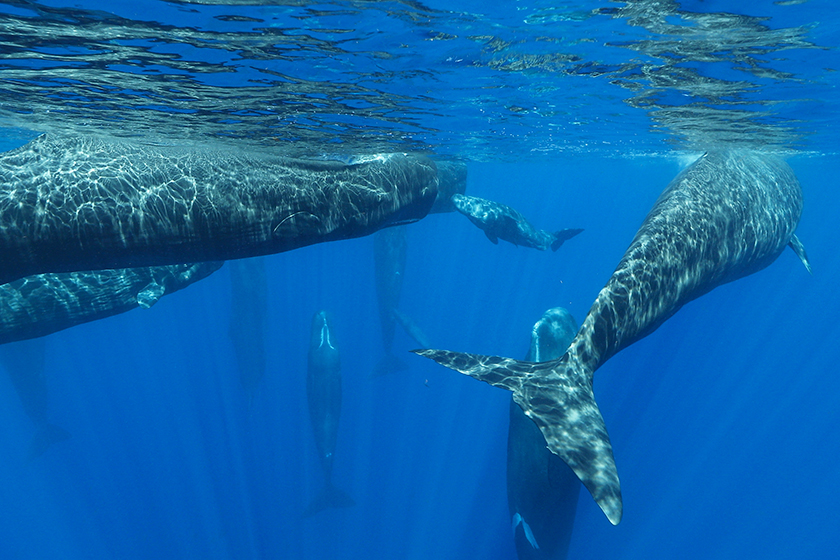
Sperm whale cultural identity is directly linked to clan association. Although they reside in oceans around the world, sperm whales and social units from different clans do not associate with one another. Individuals who are not from the same clan avoid interaction even if they live in close proximity in a shared environment.
Their language allows the whales to instantaneously discern if another group is friendly and viable for socialization or should be avoided. Variations in their dialects can be extremely pronounced, yet even subtle differences reinforce the practice of social segregation among clans. Recent studies have indicated that sperm whales emphasize their dialects when rival clans are nearby in order to differentiate themselves and steer clear of one another.
Researchers from the Dominica Sperm Whale Project have identified two vocal clans in the Eastern Caribbean. While social units from the same clan have been observed foraging, socializing, and intermingling with each other, there is no interaction between social units from the different clans.
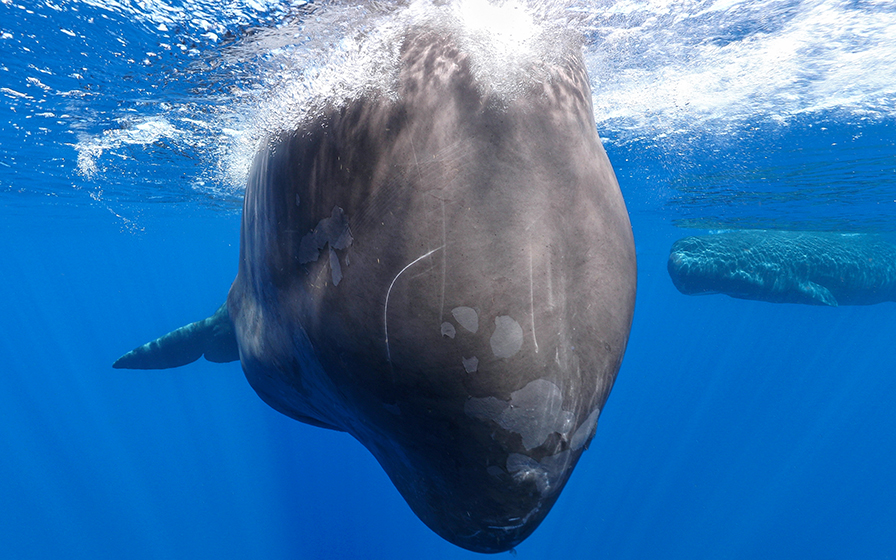
Echolocation and Vocalization
Sperm whales produce and emit acoustic frequencies for the dual purposes of echolocation and communication. They echolocate by emitting directionally focused beams of broadband clicks. These reverberating clicks act as a biological sonar system used to navigate underwater topography, determine the presence, size, and location of animals and objects, and to hunt. The whales generate language by producing a specified series of nuanced and refined communicative clicks devised to impart and share information.
Whales and all cetaceans live in an ideal acoustic environment in that the ocean serves as a phenomenal acoustical transmission system. Sound travels approximately four times faster in water than in air, and the salinity in the oceans provides an added boost in transmission efficiency. In addition, water density and temperature vary widely in the oceans, creating layers on both vertical and horizontal planes which direct and intensify the conductivity of sound. The end result for sperm whales is that sonar clicks travel rapidly and over long distances.
Acoustically Extraordinary by Design
Sperm whales are biologically designed to produce and amplify sound, and to receive incoming vibrational information. They possess a combination of specialized anatomical features that work together to support their impressive sonic capabilities.
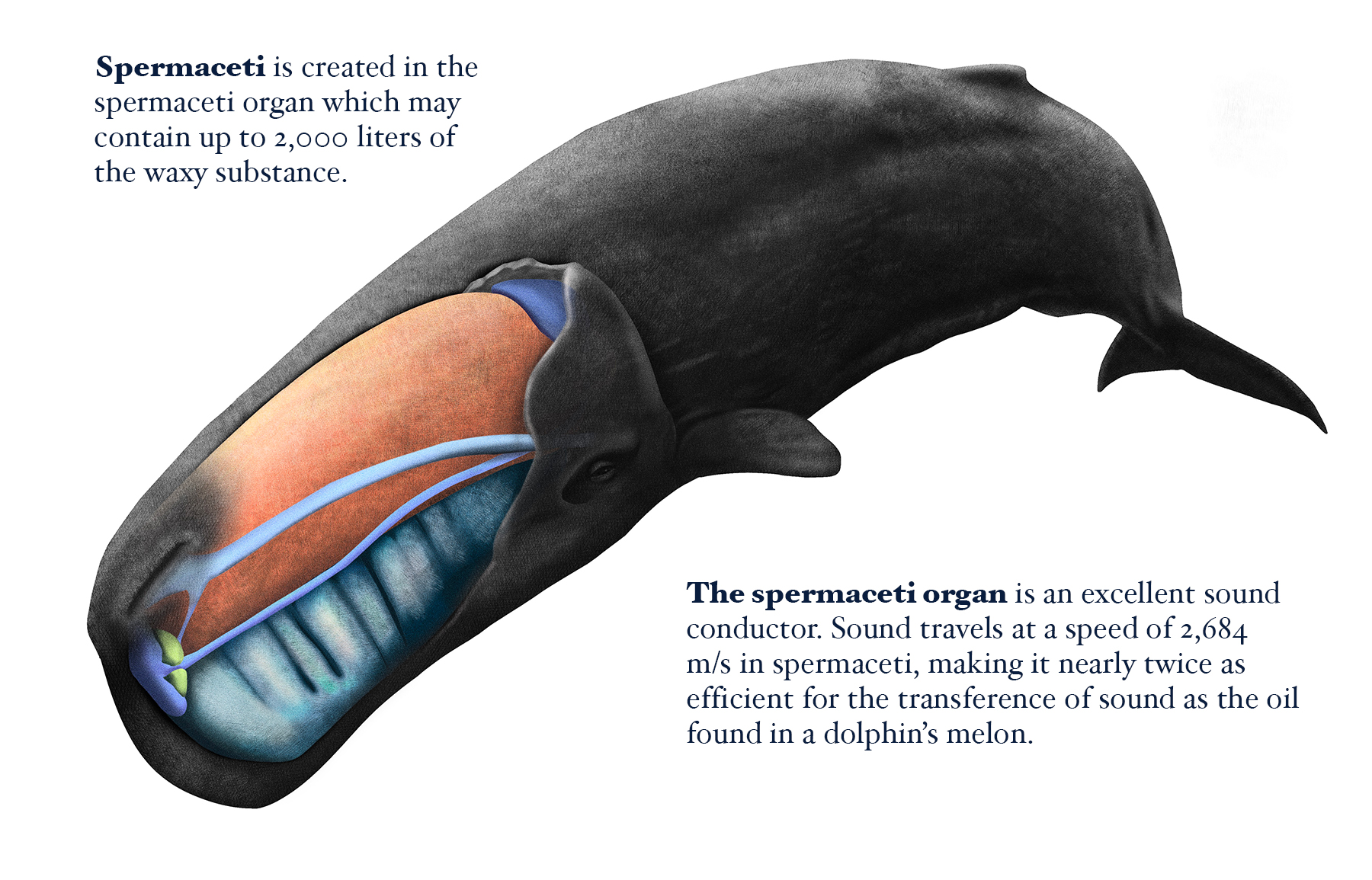
The massive head of the sperm whale accounts for approximately 1/3 of its body length and is constructed to maximize the generation of sound. The largest portion of the head cavity is occupied by the spermaceti organ which sits on top of the whale’s enormous melon. This organ contains a waxy liquid called spermaceti that serves as an extremely effective sound conductor.
As in all toothed cetaceans, the frontal portion of the sperm whale’s skull is dished out and contains an air sac in the area directly above the eyes which creates a sound reflector. In essence, the bulbous head operates as a sonic boom box.
The Production of Sound
Cetaceans produce sound underwater by manipulating controlled air within the head cavity. Like all Odontoceti, sperm whales have a single blowhole situated on the front left side of the head. The left nasal passage is dedicated to the exchange of air, however there is no exterior opening for the right nasal passage. Its function is to direct and push air through a structure located beneath the blowhole called the phonic lips. The movement of air as it passes through the phonic lips causes the surrounding tissues to vibrate, thus producing sound.

In sperm whales, these sonic vibrations bounce off of the Distal Air Sac at the front of the nose and enter the fatty organ which contains lipids of different densities that in turn act as sound lenses. The vibrational energy keeps traveling back through the spermaceti organ and is reflected off of the air sac positioned directly in front of the dished-out portion of the whale’s skull.
From there, the vibrations pulse through a series of acoustical lenses within the fatty structure or ‘junk’ in the lower portion of the head where the sound is reflected and focused to form a narrow beam projecting the energy outward. This process hones and amplifies the sound which is emitted through the thick skin at the front of the head in the form of sharp broadband clicks that range between 5 – 25 kilohertz.
The focused sonar frequency is projected in a fast series of clicks called ‘click trains’ that are generated at 600/second, and the volume is truly incredible. While the number of hertz units represents a measure of frequency, a decibel is used to measure intensity level. Sperm whales are capable of creating clicks up to 230 decibels, making them the loudest animal on earth.
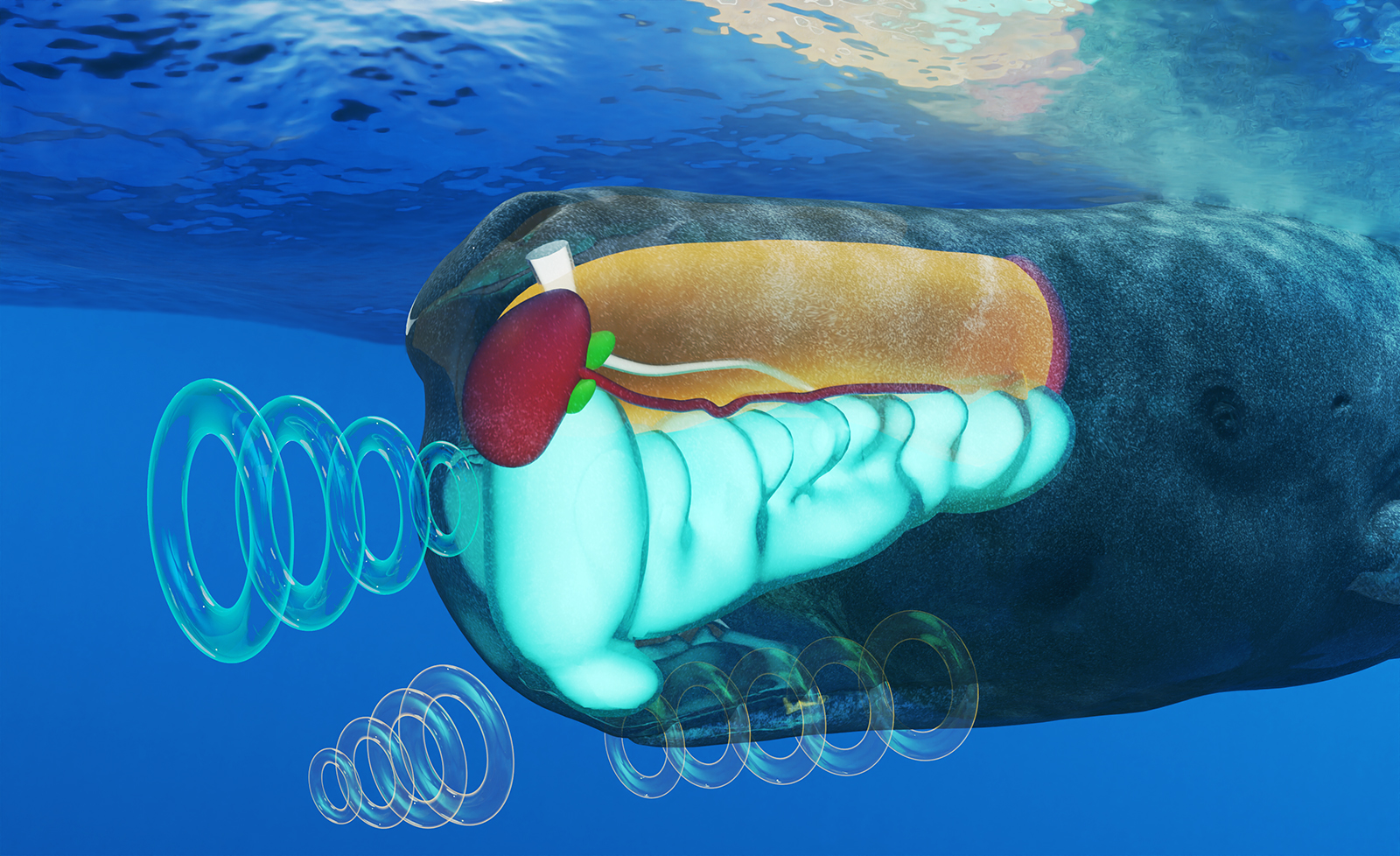
For the purpose of echolocation, the whales project these sonar clicks in a cone shape that expands to create an acoustic sphere which is audible for up to three miles. They use the clicks to scan their surroundings and can direct the beam of sound emerging from their heads to act in the same way that a searchlight is used to illuminate a select target in a dark environment. The whales then receive and interpret the echoes or reflections of the sound vibrations that are bounced back from their surroundings.
The Reception of Sound Frequencies
Sperm whales receive the returning echoes or sound vibrations through a padding of fat located in the rear portion of the lower jaw. Their fat-filled lower jawbone is specialized to accommodate the transfer of sound vibration and acts like a biological antenna. Incoming sound waves stimulate minuscule vibrations in the jawbone which in turn travel through the acoustic funnel, which is a cone-shaped bony structure that lies in direct contact with acoustic fats that reside inside the jawbone.
The vibrations are then relayed along a fine channel of fat to their ear bones and are passed into the fluid-filled inner ears. From there, clusters of neurons transform the vibrations into nerve impulses that enter the brain of the whale. Connective nerves then convert the vibrations into impulses that have meaning.
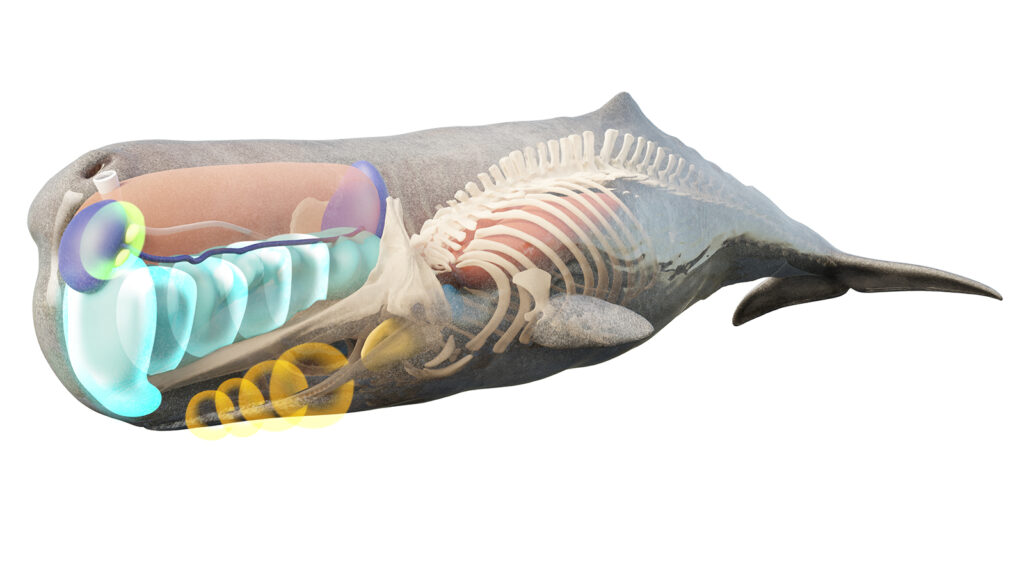
Like vision, sound is a perception created by the brain. The brain acts as an interpreter to analyze, translate, and assign meaning to incoming nerve impulses. The end result of these complex neural processes is the ability for sentient beings to experience conscious thoughts, perceptions, and sensations. What we experience is literally an interpretation of vibrational stimuli represented in our mind’s eye.
The extraordinary sonar capacity of sperm whales is akin to having keen vision. In theory, it is feasible that the whales can use sonar to functionally ‘see’ in the dark by creating a visual interpretation of acoustic information. In other words, sound vibrations may be processed into visual perception and experienced as images. What we know for certain is that sperm whales can discern their environment with such precision that they can detect a 1 ft. squid from a distance of 1000 yards.
Clicking to Communicate
Sperm whales generate language through communicative clicks that are unique to each individual, social unit, and clan. Their vocabulary consists of specialized vocalizations of clicks, creaks, and codas that are blended to form a sophisticated communication system.
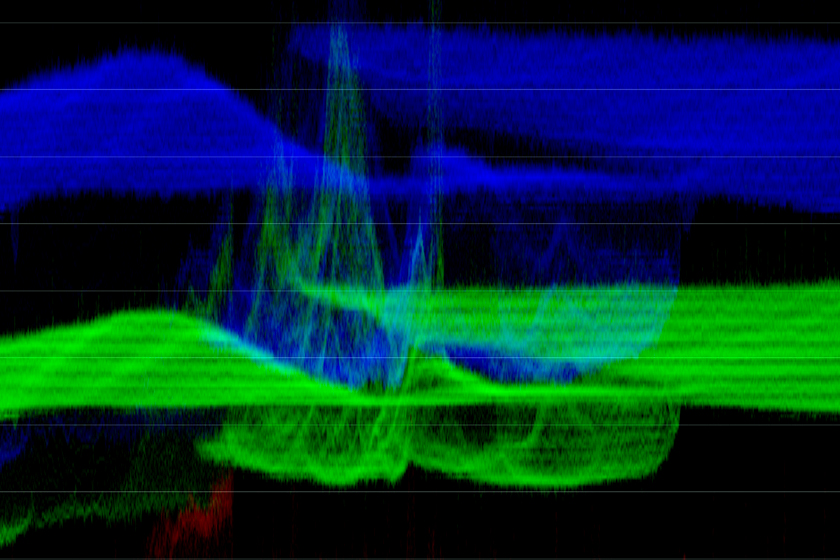
Visual Representation of Codas
Sonar clicks are primarily utilized for scanning and hunting purposes, and may also be used as a general means of staying in loose contact as a group. When members of a social unit are within hearing distance of one another they consider themselves to be together. The whales click while they are at depth but stop clicking in order to make a silent ascent when surfacing for air.
Creaks are used when the whales focus their attention to explore or examine subjects of interest in their environment and are also utilized during socialization sessions. The oddly familiar mechanical sound is generated through a rapid series of high frequency clicks that merge to produce a creaking noise. This compelling form of vocalization is aptly named, as it mimics the sound of a door with a creaky hinge being slowly forced open.
Codas are the language markers that distinguish sperm whale clans, social units, and individuals within the family groups. This distinct form of articulation is composed of short, rhythmic, and clearly defined patterns of 3 to 20 clicks. Codas function not only as means of personal identification among individuals but also as declarations of belonging within social units and clans. The specific codas utilized by different clans represent distinctive dialects that are in essence proclamations of cultural identity.
Sperm whales exchange codas in the midst of a variety of social settings and during periods of transition. They can be heard communicating in this manner when they are diving, surfacing, and traveling together. The whales emit codas to greet family members and familiar friends within compatible social groups, and when mature males are present during the mating season. They are believed to generate codas when predators are in the vicinity, however the unit members may also group together and remain completely silent to avoid predation.
These acoustic cultural markers are transferred to each generation within the social units, and the language acquisition process for sperm whales is similar to that of humans. Calves begin to produce incoherent buzzing noises within weeks of their birth, much like the gurgling of human babies. It takes approximately two years for the little whales to develop the ability to articulate the codas unique to their families and clans.
Codas, Clans, and the Eastern Caribbean Population
Researchers have identified 80 coda variations among sperm whales around the world and each clan utilizes a select assortment of preferred codas to distinguish the clan’s identity. The unique dialect of each clan is determined by the frequency with which specific codas are used among its members. Codas that are used most often in their verbal repertoire represent the clan’s acoustical signature.
There are numerous codas within the vocabulary of each clan, however one specified coda is used to exclusively identify members of a particular clan. This is the most commonly used vocalization and it is delivered frequently as an acoustic signal of belonging. The constant production of this coda is the way that the whales announce, “This is us!”.
The second most commonly used coda identifies each individual whale. This vocalization is uniform in its configuration, however there are subtle but consistent variations in the timing between clicks. For example, the coda may consist 0f 5 clicks, but each whale will pronounce its 5-click identity in a slightly different way. This is how individual whales articulate, “This is me!”.
The third most frequently used coda is produced to identify the family group or social unit. This coda consists of a set number of clicks that vary in pattern and is typically only utilized when other social units are nearby. When the whales emit this coda they are stating, “This is our family!”.
The size of sperm whale acoustic clans varies widely and can include fewer than a hundred to several thousand whales. The Eastern Caribbean is home to two resident clans, the larger of which contains over twenty family groups who are regularly observed off the coast of Dominica. There are far fewer families in the smaller clan, and they are only sighted on rare occasions. Collectively the whales in the region use a total of 23 codas. Most but not all of the family groups make use of the full repertoire of those codas.
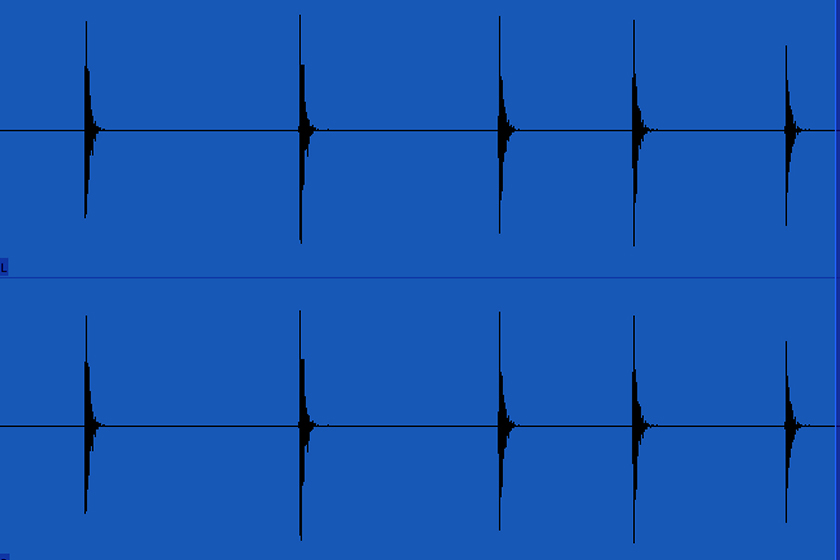
1 + 1 + 3 Coda
The larger Caribbean clan has the most unique identifying click pattern in the world. Its coda is performed as: 1 + 1 + 3 sharp clicks. The smaller clan expresses its identity via a long, slow articulation composed of: 1 + 1 + 1 + 1 + 1 clicks.
The coda pattern for individual whales consists of 5 rapidly emitted clicks, which is referred to as 5-R (for regularly spaced clicks). As mentioned, variations in the timing of the clicks differentiate each whale. Identifying codas for family or social units consist of a pattern of 4 clicks that are pronounced differently by each unit.
The ability to remain together through an auditory field of connection is likely to provide the sperm whales a tremendous sense of unity within families and clans. In the following video, several members of Units U and F demonstrate their communication skills as they exchange an abundance of codas while in transit.


